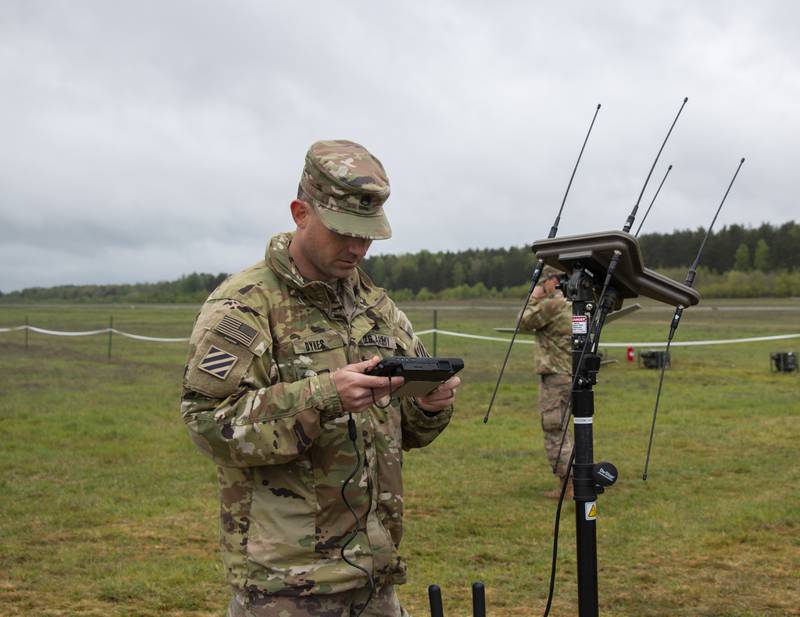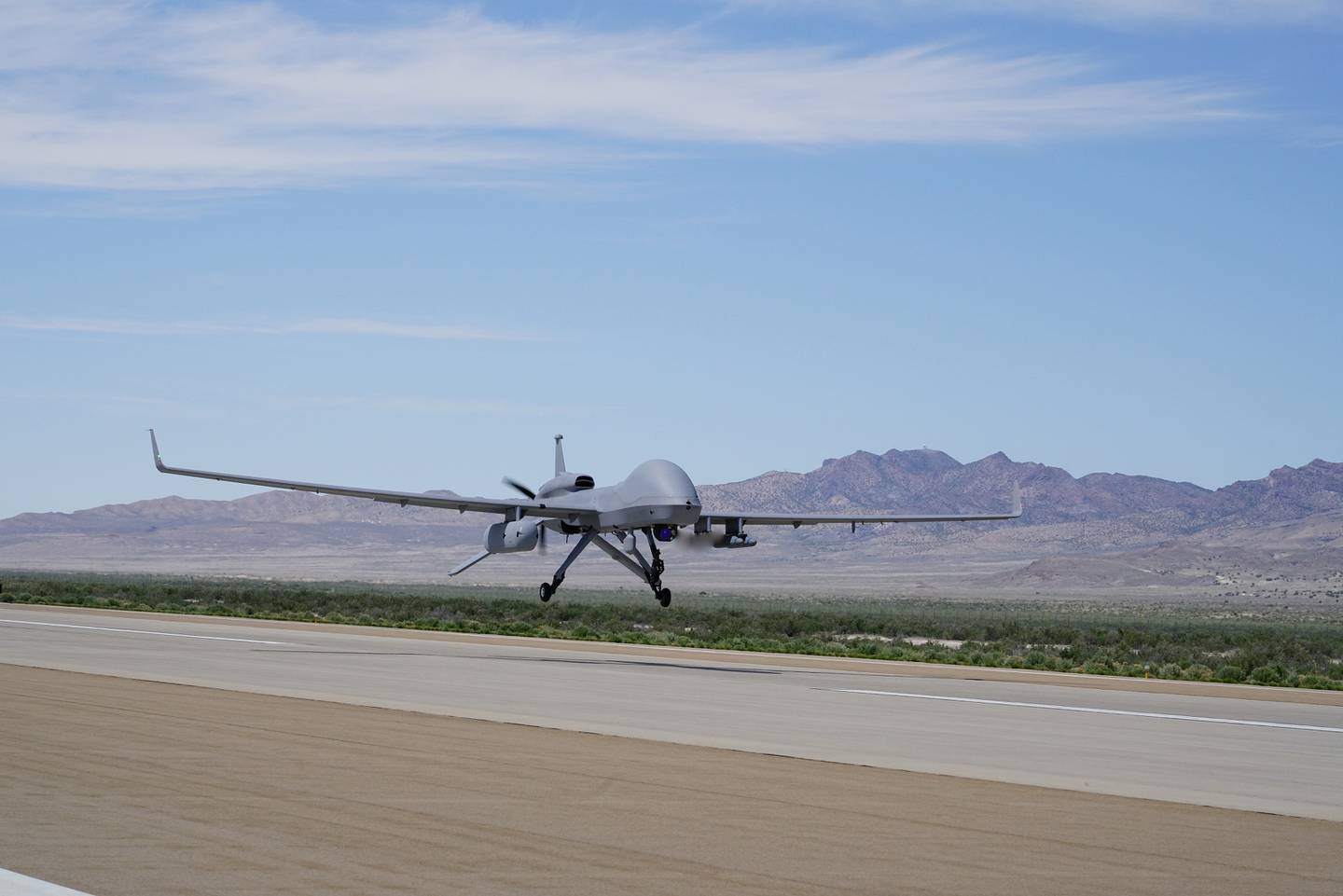Something is wrong. Gas stations are unable to process credit cards due to unknown equipment failure. Cash registers and scanners are inoperable at grocery stores. Reports are coming in that traffic signals are out in multiple major U.S. cities, causing chaos on the ground. Halfway around the world, U.S. military aircraft are grounded due to increased jamming in the war zone. We discover that the movement of key political leaders is being tracked in advance of a direct attack.
Although this scenario is imagined, the reality of 2023 is that our connectivity to, dependence on, and risk because of the electromagnetic spectrum, or EMS, has never been greater. Because the Department of Defense will never have protected access to the EMS, U.S. adversaries such as Russia, China, and Iran have the capability to detect, restrict, or deny the EMS at the time and place of their choosing. Russia’s current use of advanced electronic surveillance to detect, locate, and target Ukraine positions is a clear reminder that detection equals horrific destruction. We must address the U.S.’s ability to hide in plain sight on the battlefield by reducing electromagnetic signature, improving training, and sensing and understanding electronic signals.
RELATED

If we are to reduce the Army’s electromagnetic signature, we must invest in smart power technology that reduces heat signature, decoy technology that confuses the enemy, and integrated capabilities that obscure electronic signals. Most of the U.S. military’s weapons systems---radios, ships, tanks, airplanes, drones, satellites, and rockets---depend on the electromagnetic spectrum to operate. Likewise, the U.S. military depends on the electromagnetic spectrum to conduct operations and keep troop morale high.
However, our troops and our installations are under constant surveillance by our adversaries’ satellites, aircraft, and other technologies. In 2018 the U.S. military discovered that service members’ fitness apps provided a heat map of their locations in war zones. Most adversaries’ spectrum-related equipment can quickly sense and target a military command and control post. Investing in emerging smart power technologies can reduce the sound and heat signatures of generators and provide better concealment.
Investing in advanced and electronic decoy technologies, techniques proving effective for the Ukrainian Army, is a game changer in protecting command and control centers. Obscuring electromagnetic signals by blending in with surrounding commercial network traffic reduces risk of detection. The Army recognizes that these technologies must be available to U.S. forces. They provide current and future Soldiers with the “digital camouflage” they need to survive.
Beyond technical improvements, the U.S. needs to continue to consult with industry and academia to improve training. While the U.S. was engaged in combat operations in Afghanistan and Iraq with a less technologically advanced adversary, our management and knowledge of the electromagnetic spectrum took a back seat. As Air Force Chief of Staff General Charles “CQ” Brown recently told Congress, the military “has lost some muscle memory” on electronic warfare. This includes teaching spectrum management and how to operate in the environment. Based on observations from the war in Ukraine, we need to place a sense of urgency on spectrum and survivability on the battlefield.

We must immediately enhance training to keep pace with China’s investment in sensors and jammers, as well as Russia’s modernization of spectrum related equipment. Training will also reinforce needed electronic habits and practices that increase troop survivability on the battlefield. Institutional partners such as colleges, universities, and many vendors have continued to advance products and research. They can help the U.S. military develop a broad sense of understanding the electromagnetic spectrum and increase the ability to sense the environment and one’s place in it. We must also continue to partner with government agencies such as the Federal Communications Commission and National Telecommunications and Information Administration.
The U.S. military must also invest in the development of situational awareness capabilities that allow commanders to observe their operational environment and understand if systems are compromised or jammed. Commanders need to be able to see, understand, and manage electromagnetic signature. Many military commanders conducting operations on land, sea, or air are not familiar with what their electromagnetic footprint looks like or how the enemy sees them in the spectrum.|
No. 1 request
How can they know when or what to hide? As the Director for the Army’s Network Cross-Functional Team, part of U.S. Army Futures Command, I have spoken with commanders in the field during training exercises and experimentation events. Their No. 1 request is the need for a way to see themselves in the electromagnetic spectrum. This capability ultimately provides the commander with the awareness needed to mitigate the electronic signature and the pathway needed to reduce the threat.
Some would say that units in the Army cannot hide when they roll into a large foreign air base. I would argue that although troops’ presence may be apparent, their pattern of life, communications, and maneuver when they mass should be kept from our adversaries. The important takeaway is U.S. adversaries are heavily invested in denying the DoD maneuver space in the electromagnetic spectrum.
While the U.S. military, including Army Futures Command and our teammates, recognizes the urgency of this challenge and is moving forward, more is needed to counter an adversary who is determined to win. China, Russia, Iran and others have observed more than 20 years of a counterterrorism war and they have invested in equipment, training, and people to try to deter or defeat the U.S. military. It is imperative that the DoD intensify its efforts to reduce electromagnetic signature, improve training, and develop tools to sense and understand the environment. We must prepare for the day the U.S. is denied access to the EMS.
Maj. Gen. Jeth Rey is the director of the Network Cross-Functional Team at Army Futures Command. He is responsible for the continuous improvement of network, command, control, communications and intelligence to enable mission command across the tactical network. Rey has served in the U.S. Army for 39 years in enlisted, warrant officer, and commissioned officer ranks.








